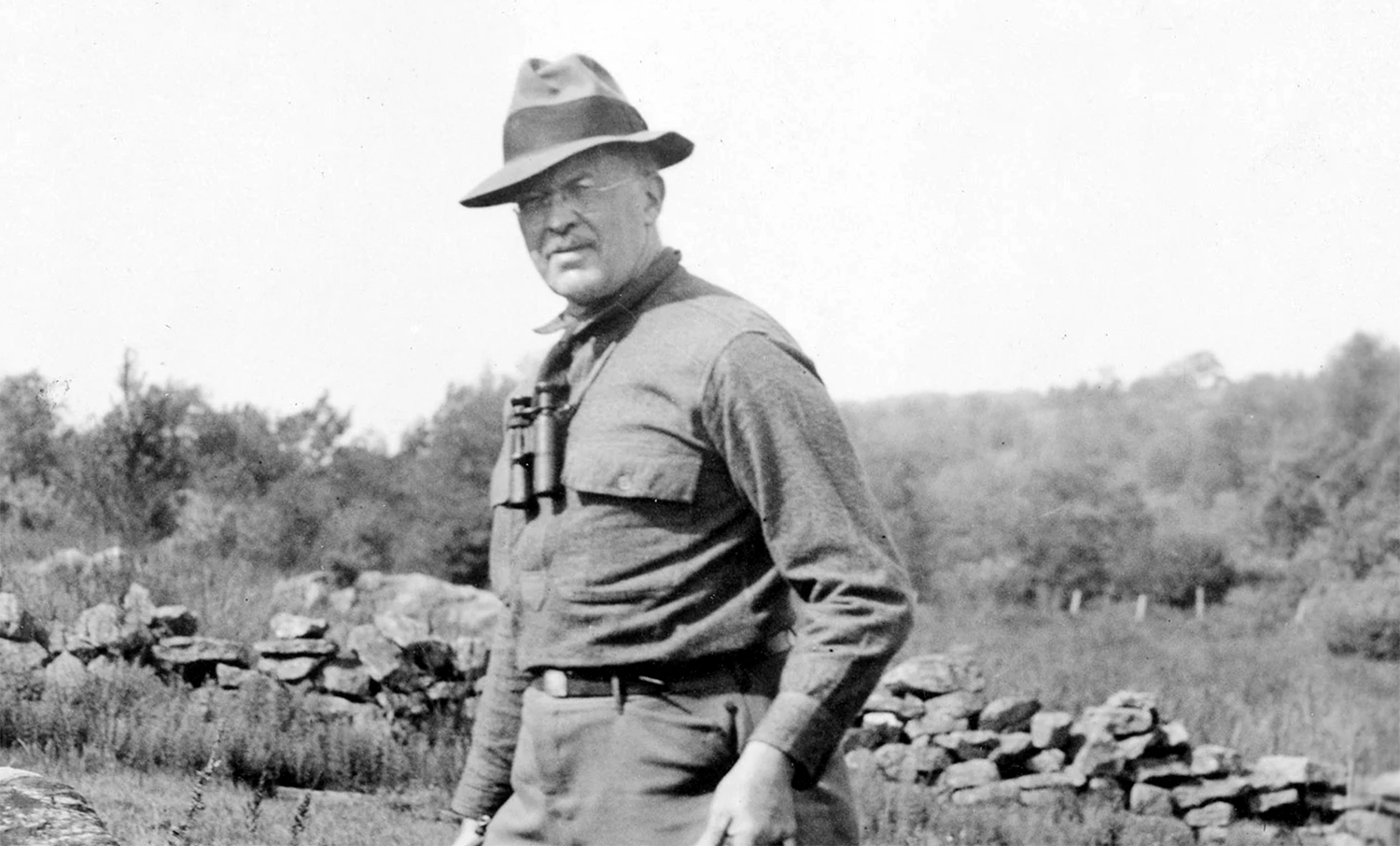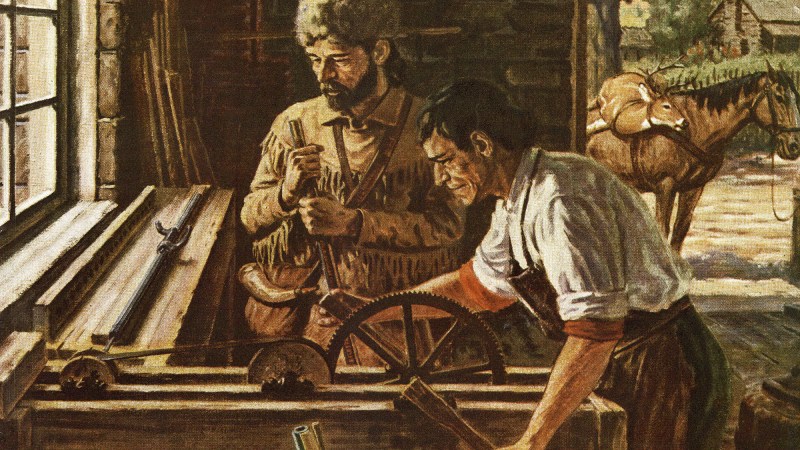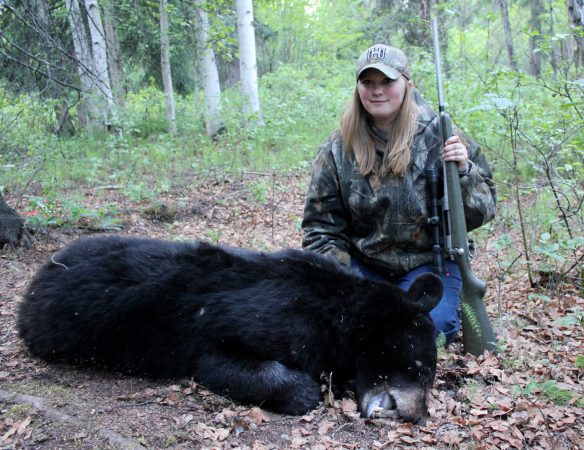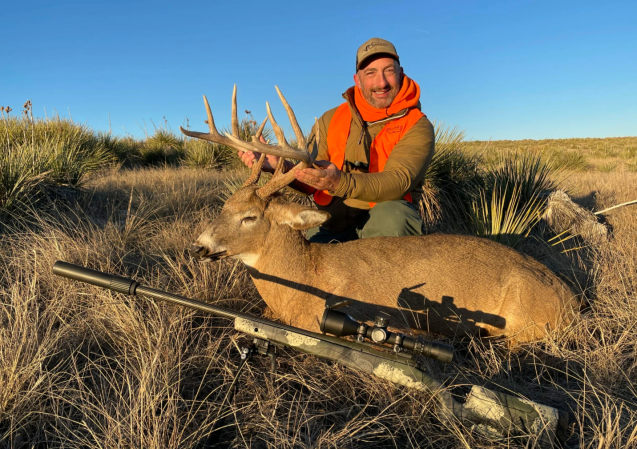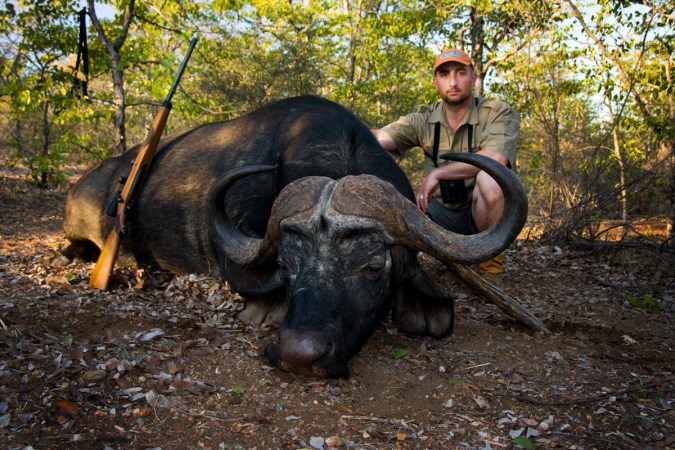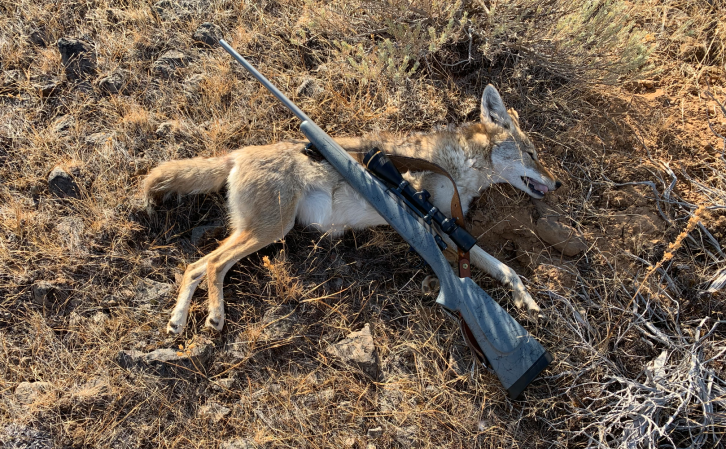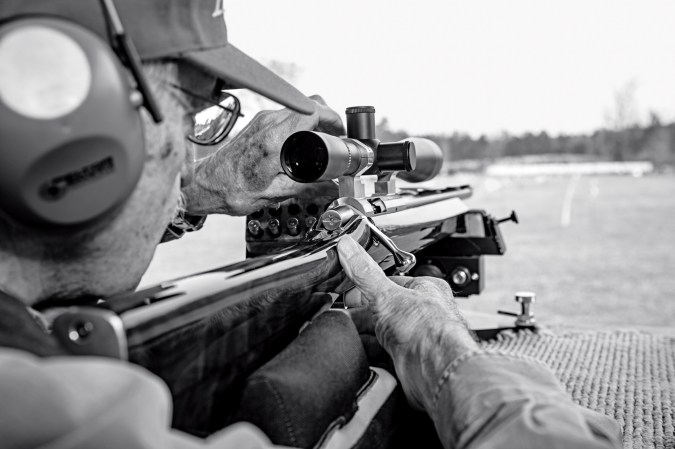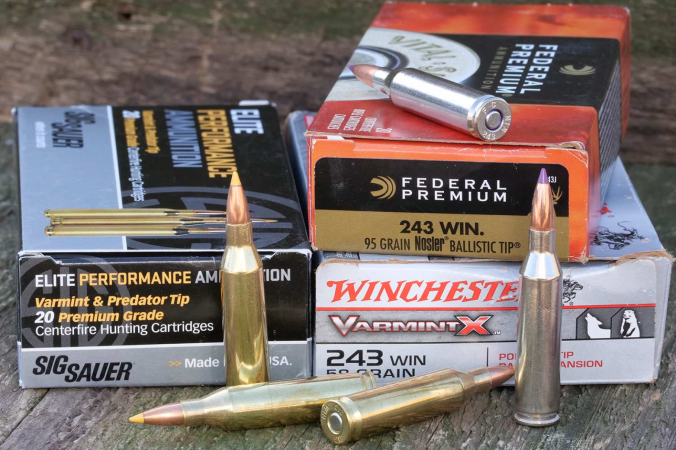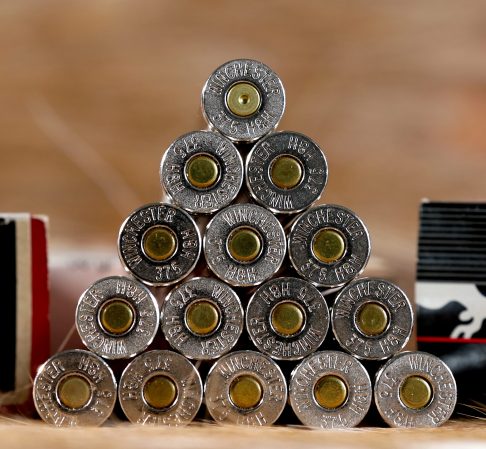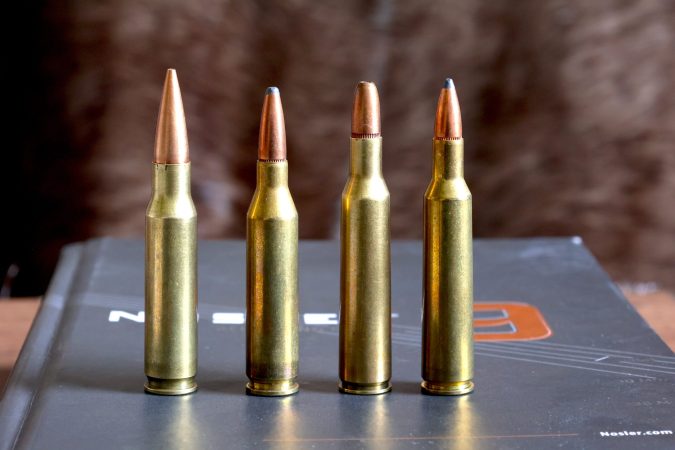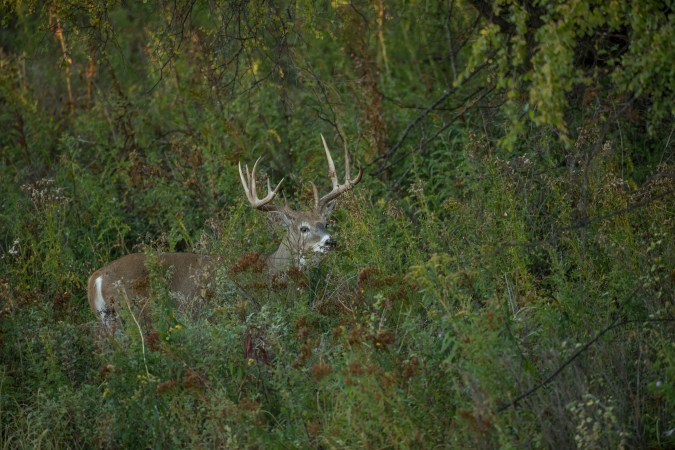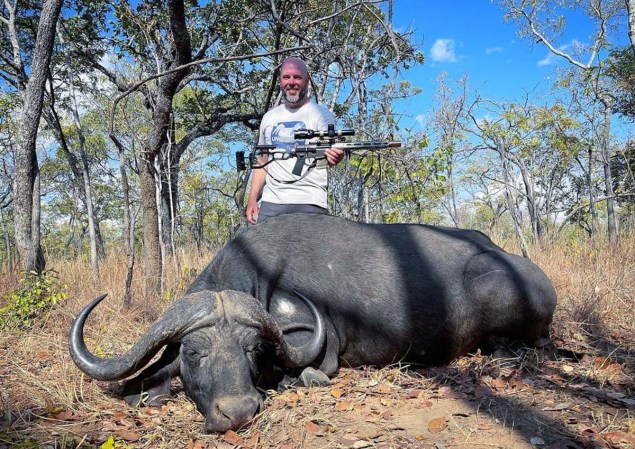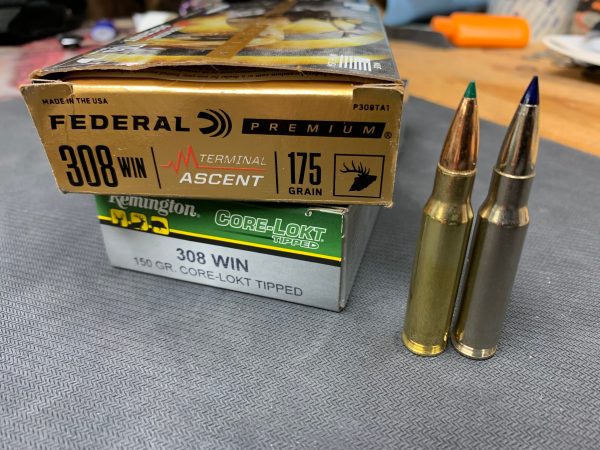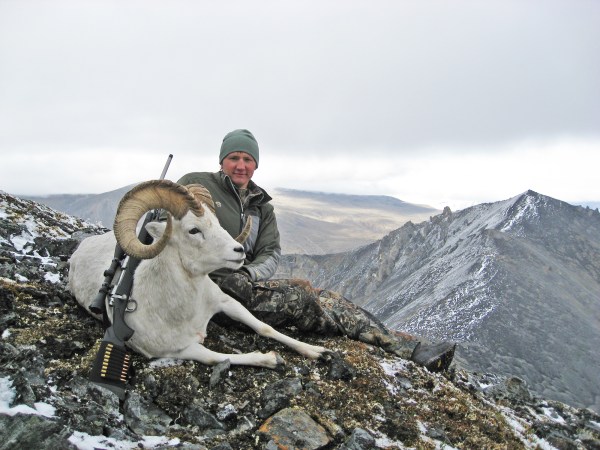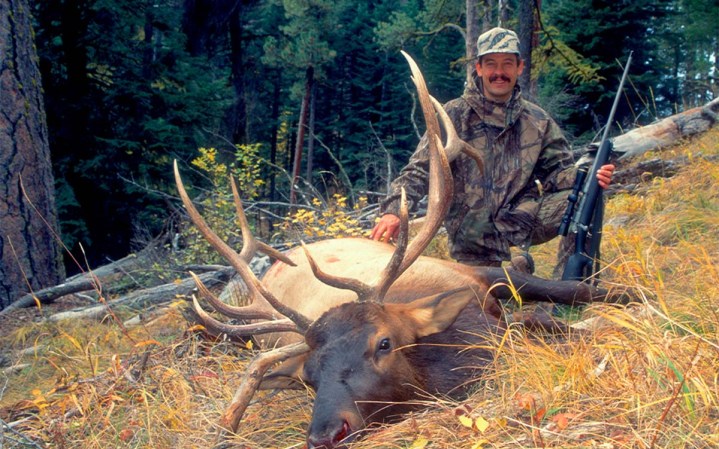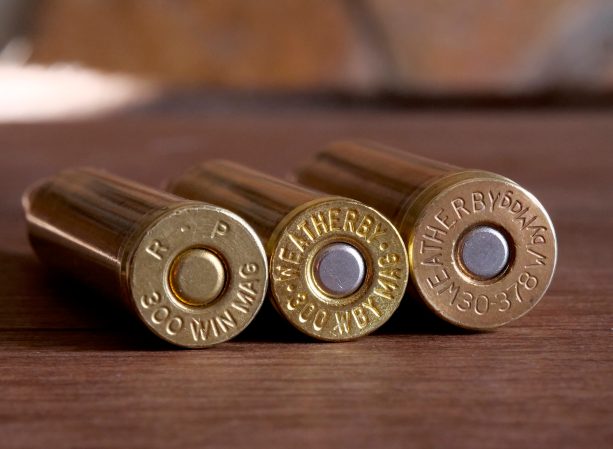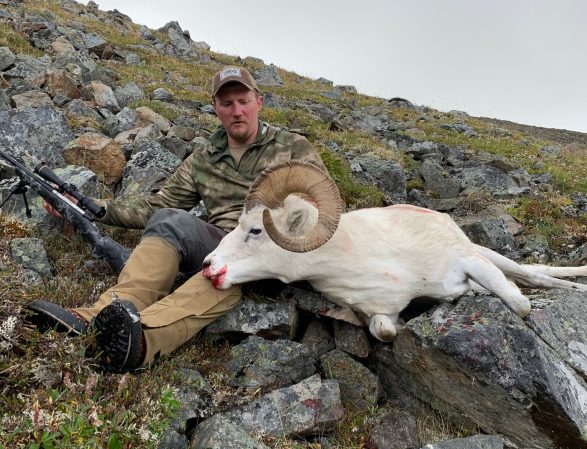We may earn revenue from the products available on this page and participate in affiliate programs. Learn More ›
Townsend Whelen, who was one of Outdoor Life’s first shooting editors and one of the founders of the legendary gun maker and outfitter Griffin & Howe, wrote extensively about big game hunting from the early 1900s until his death in 1961. His articles on rifles, ballistics, cartridges, optics, and marksmanship have endured through the decades, thanks to his concise, informative prose that was based on years of practical experience as a hunter, competitive shooter, and career army officer.
He opined at length on the best cartridges for big game hunting, though he approached the topic with a characteristic open-mindedness. He was willing to consider and try new rounds as they became available, and loved to test out new equipment in the field and report on their results.
I’ve unearthed Whelen’s favorite hunting cartridges by reading through his archived stories and books. One way to think of this list is as a snapshot of some key milestones in ballistic history, as well as an over-the-shoulder peek at the hunting rounds Whelen viewed as state of the art over his decades-long career. Many of his observations embody timeless wisdom and are still relevant today.
A Curious Exception
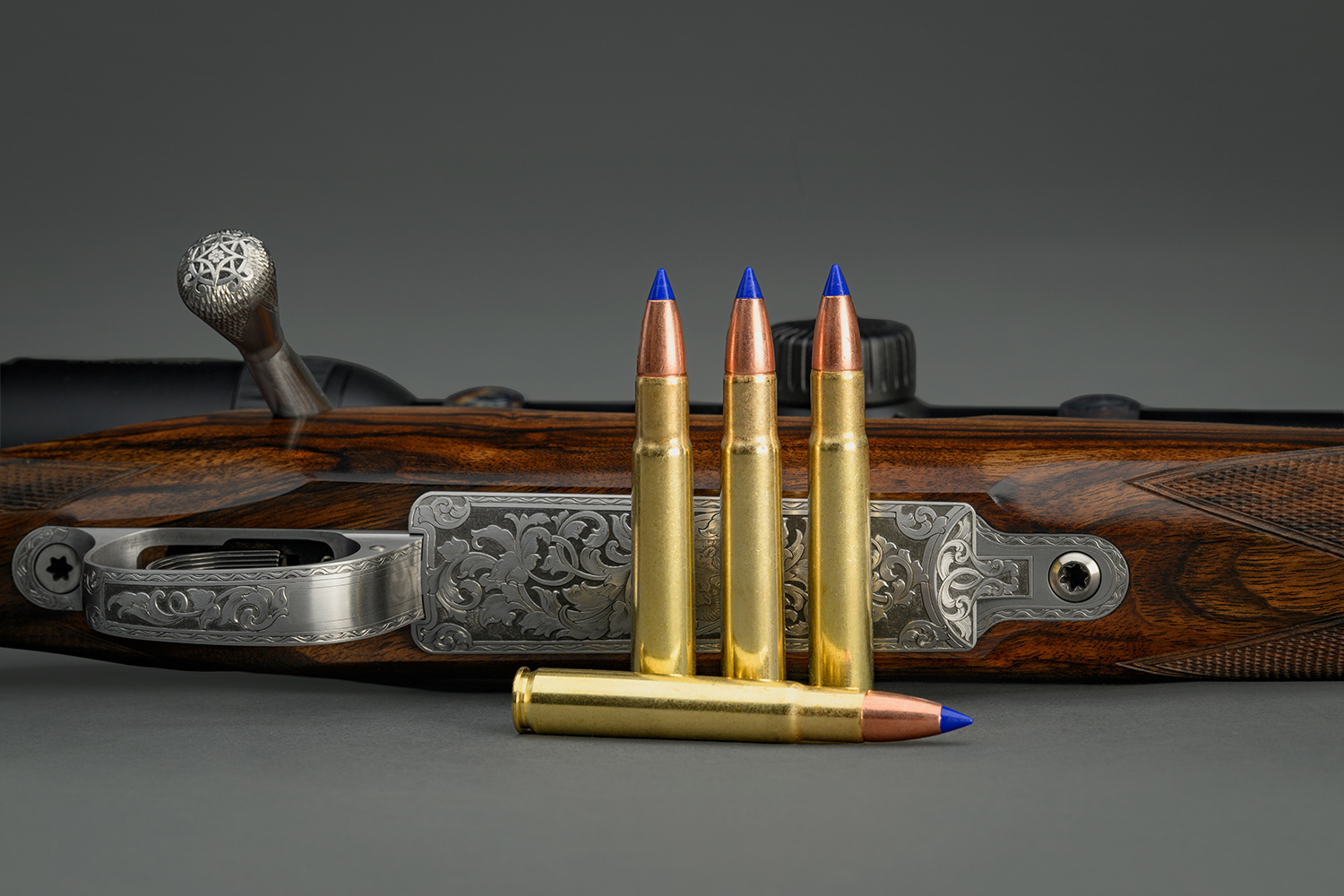
You’d think that among the cartridges he touted the .35 Whelen, which bears his name, would be included. After all, taking the .30/06 case—which was technologically advanced for the time—and necking it up for hard-hitting .358-caliber bullets was a winning combo.
For not much increased recoil the .35 Whelen launched bullets from 180- to 250-grains and quickly gained a reputation as a solid big-game killer. (Most .35 Whelen loads feature one of four bullet weights: 180, 200, 225 and 250 grains).
Whelen mentioned the round in passing—notably to give credit to James Howe (of Griffin & Howe) for designing it—and briefly touched upon others’ accounts of it in the field. But if he ever hunted with it, or even shot it much, he didn’t document the experience. As far as I’ve been able to learn, he never messed with the round in any meaningful way—other than doing some hand loading for it—and its exposure to the general reading public was through other writers of the time like Elmer Keith, who hunted with it extensively and was a fan of the 250-grain spitzers.
READ NEXT: Two Rifles for the Ages, Chambered in .35 Whelen
This blind spot to his eponymous cartridge extended to the .400 and .375 Whelens, which Howe developed at the same time, though they never caught on the way the .35 did. If I had to guess, I would say that Whelen’s modesty, refined upbringing (he came from Philadelphia aristocracy), and soldierly sense of decorum precluded him from overtly praising the cartridge, rather than the existence of some undisclosed antipathy toward it. To ballyhoo something bearing his name would be unseemly.
Whelen’s Favorite Hunting Rounds
The list of cartridges Whelen recommended for big game evolved over the years. His career spanned an era of explosive growth in cartridge and bullet development as well as the adoption of such marvels as telescopic sights.
For this reason, his earlier writings (from 1906 to the mid 1920s) prominently featured cartridges like the .30/40 Krag (aka the .30 Army), the .30/30 W.C.F. (aka .30/30 Win.), 7mm Mauser, .250 Savage, and their peers. Later on, he became a fan of rounds such as the .270 Win., .257 Roberts, and .348 Winchester. Throughout his long career, however, he never wavered in his praise for the .30/06 and the .375 H&H (with some qualifiers) when the topic of big-game hunting turned to cartridge selection.
Townsend Whelen’s Top 10 Big-Game Cartridges
- Best All Around: .30/06 Springfield
- Best for Whitetail: .250-3000 Savage
- Best for Mule Deer: .270 Winchester
- Best for Elk: .30/40 Krag
- Best for Moose: .35 W.C.F.
- Best for Grizzly and Brown Bear: .375 H&H Magnum
- Best for Black Bear: .35 Remington
- Best for Antelope: .257 Roberts
- Best for Sheep and Mountain Goats: 7x57mm Mauser
- Best for Caribou: 6.5x54mm Mannlicher Schoenauer
Best All Around: .30/06 Springfield
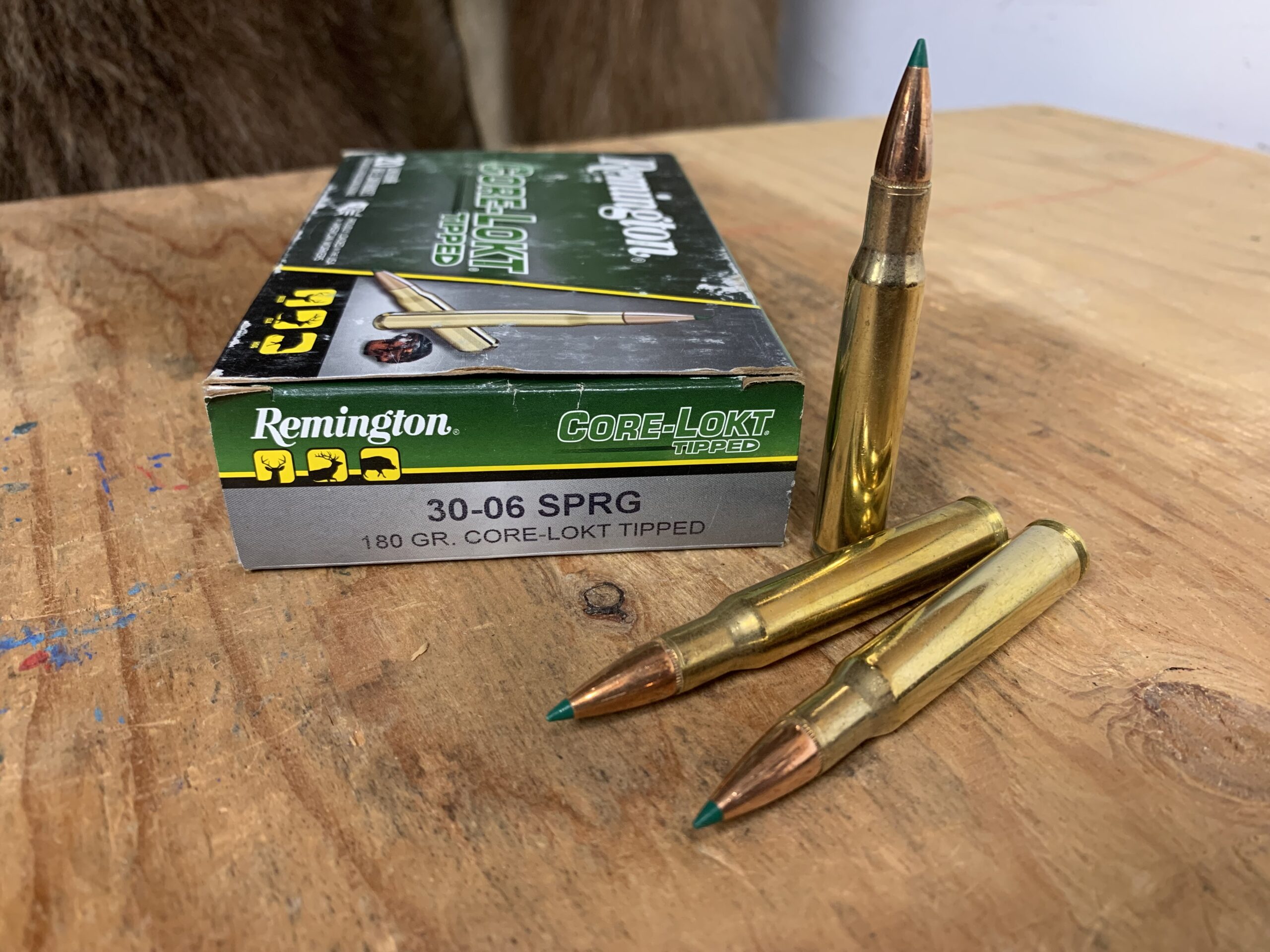
Whelen’s career as an authority on hunting and shooting marched in lockstep with the creation of the .30/06 and its rise to prominence. He was intimately familiar with the round and could rattle off technical details in his sleep concerning its history, refinements, the pros and cons of the numerous available loads, and its qualities on the battlefield and for hunting.
He worked with the cartridge both in his capacity as a sportsman and as an army officer—particularly after World War I when he transferred from Infantry to Ordnance, eventually becoming the commanding officer at Frankfort Arsenal and the director of research and development at the Springfield Armory.
He hunted extensively with the .30/06, killing all manner of big game during his many adventures. One of his preferred projectiles was Western Cartridge Company’s 180-grain open point boat tail bullet, with which he killed a grizzly bear, three moose, two caribou, two bighorn sheep, four mountain goats, and six deer.
He documented his experience with this bullet in particular because of occasional reports of 180-grain bullets failing on game. He wasn’t buying it.
“There has never been even a suspicion of a failure on any of the game I have shot with it,” he wrote. “Many other sportsmen have had a similar experience.”
He found the bullet delivered good accuracy as well. “In my own rifle it was averaging about 2-inch groups at 100 and 4 inches at 200, and I got one moose killed clean at 325 yards and two goats killed likewise clean at 325 and 350 yards,” he said.
On bigger game, many hunters gravitated toward 220- and 225-grain bullets back then, and the relative killing power of those bullets when compared to the wimpy 180s was a hot topic of discussion.
Whelen gives the heavier bullets their due, in particular the 220-grain soft points: “This bullet has made a very enviable reputation for fine killing power on larger game, and particularly on moose and Alaskan brown bear.”
But when it came to terminal ballistics, a topic he was better versed in than most, he didn’t go along with the accepted wisdom that bigger meant better.
“It is generally supposed that the 220- and 225-grain bullets are more reliable killers on our larger game than those of 180 grains. I am not so sure of this,” he said. “I would put them about on a par with the best of the 180-grain bullets up to 200 yards. Beyond that distance the trajectory of the 220 grain bullets becomes too curved to surely hit a deer or animals of that size.”
In his opinion the effectiveness of those heavy bullets topped out around 225 yards, while the 180s and 172s could hit accurately and kill game to 350 yards.
If he sounded like he held strong opinions on the .30/06 that’s because he did. He never hesitated to discuss—and defend—its effectiveness on game, but he also didn’t hold back critiques either.
For instance, he took ammunition manufacturers to task in the 1930s for allowing the general quality of .30/06 ammo to slip. He had three “fine scope sighted rifles of Springfield, Winchester, and Remington makes” in his collection and gathered data that showed accuracy had fallen off from an average of 1 ¾ to 2 inches at 100 yards to 3-inch groups, while at 200 yards ammo that used to print 3 ½- to 4-inch groups now couldn’t shoot better than 7 inches.
READ NEXT: .30/06 Cartridge Review
He felt ammo makers were neglecting the round in favor of newer offerings that were in the limelight and used the power of his platform at Outdoor Life and other publications to chastise those companies.
“With such ammunition a fine .30/06 rifle is no longer a 350-yard rifle, but rather a 225-yard arm for sure hits,” he said.
The reason for his bluntness was that he hated the idea of the .30/06—which he said is “never a mistake”—not living up to its potential as our best all-around big game cartridge.
Best for Whitetail: .250-3000 Savage
Not many deer hunters today would list the .250 Savage among their top picks for whitetails—assuming they’re even aware of the cartridge’s existence. A lot of them would dismiss it as underpowered, though that would have come as a shock to Whelen. I guess whitetails have become more bulletproof since his day.
But when ballistic visionary Charles Newton created the .250-3000 in 1915 for the Savage 99 lever action, he gave American sportsmen their first high-power round capable of pushing a bullet at 3000 fps.
To be clear, Newton favored 100-grain bullets in the round with a muzzle velocity of 2800 fps, but Savage wanted to break the 3000-fps barrier and loaded it with 87-grainers which would do just that.
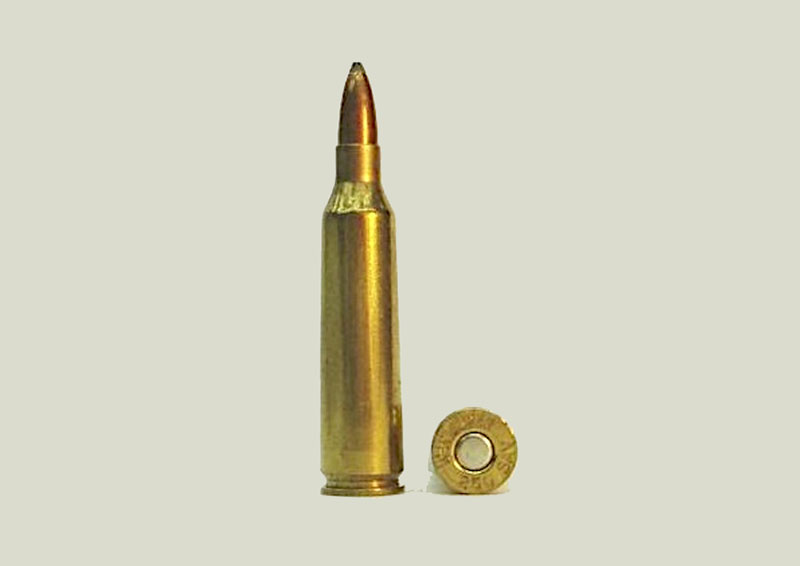
A lot of hunters jumped on the .250 Savage bandwagon and quickly demonstrated its worth in the woods.
“It has proved to be a very good deer cartridge,” Whelen wrote. Adding, “from hundreds of reports from the game fields it is quite clear that it gives a much larger percentage of instantaneous kills on deer with the first shot than does the .30/30 cartridge.”
Whelen shot the .250 with 87- and 100-grain bullets, developing handloads for both. He favored the lighter bullet for small game, and the 100-grainers for varmints and deer.
READ NEXT: Best Deer Hunting Cartridges
When he first recommended the .250 Savage for deer, the .257 Roberts hadn’t been developed yet. By his own admission in later years, he felt anything the Savage could do the Roberts could do better.
“I think that a well-informed rifleman would hardly choose this cartridge because the .257 Roberts cartridge slightly excels it in every respect,” he said.
Best for Mule Deer: .270 Win.
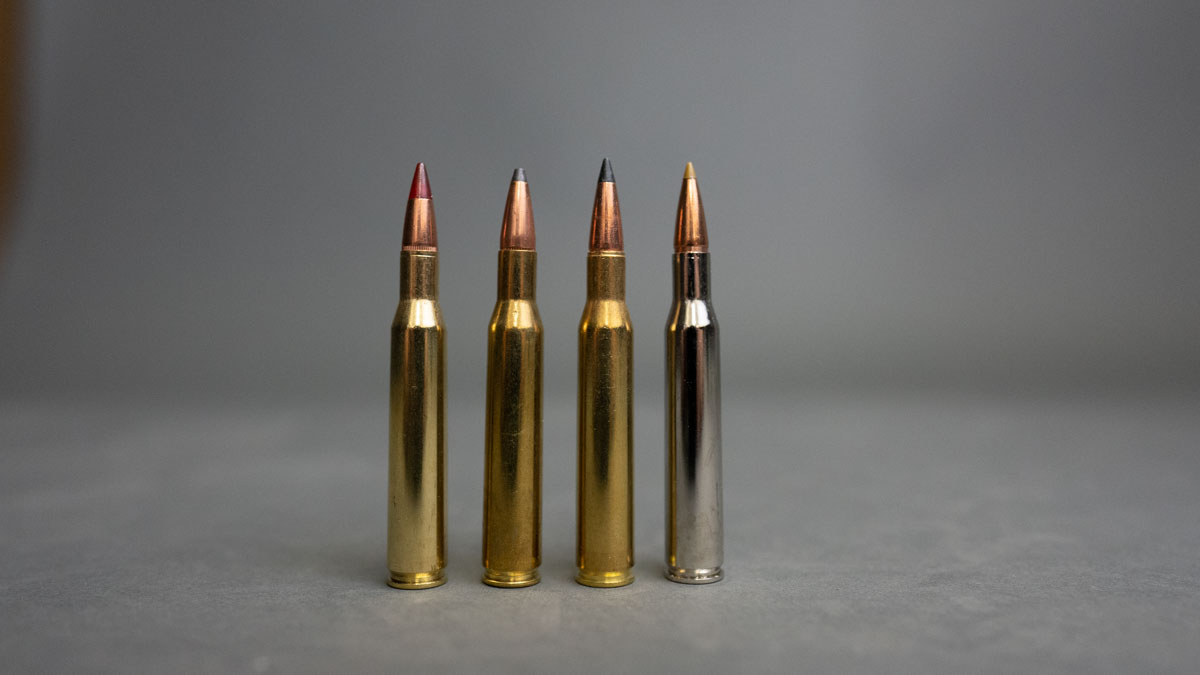
I’m taking a bit of liberty with this one, as when Whelen wrote about mule deer earlier in his career he advocated the .30/30 W.C.F. as a minimum acceptable cartridge and, as he often did, defaulted to the .30/40 Krag with a 220-grain bullet as optimal. That said, he did throw in a qualifier that any cartridges for other Western game would serve well on muleys.
After the .270 Win. came on the scene, Whelen became a huge fan, calling it “one of the finest cartridges we have for American big game shooting—a very remarkable load.”
He extolled the killing power and flat shooting characteristics of Winchester’s 130-grain spitzer bullet and described how a moose he shot with it “was killed more instantaneously than I have ever seen a moose killed before or since.”
His Winchester Model 54 was the most accurate big game rifle under 10 pounds he owned—capable of printing 10-shot groups at 100 yards measuring 1 7/8 inches, and 4-inch groups at 200. Relative to harder-kicking cartridges like the .30/06, the soft-shooting .270 lent itself to “fine practical accuracy.”
As much as we link Jack O’Connor and the .270 Win., there’s little doubt as to Whelen’s perspective: “I think it is our best American big game cartridge in the hands of a rifleman who can avail himself of its flat trajectory and fine accuracy.”
Best for Elk: .30/40 Krag
When Whelen joined the Army in the late 1890s prior to the Spanish American War, the .30/40 Krag (aka the .30 Army and .30 US) was the standard issue round. It didn’t serve in that role long. It was adopted in 1892, replacing the .45/70 and then was ousted by the .30/03 (which later became the .30/06) in 1903.
But like most cartridges employed by the military it became a hit with the sporting public, and as one of our first domestic smokeless powder rounds hunters took a shine to it. It shot a metal jacketed round nose 220-grain bullet at 2000 fps from a 30-inch barrel, which was hot stuff back then. In a carbine configuration with a 22-inch barrel, the velocity dropped to 1960 fps, which was still impressive for the time.
In 1899, a hunter killed the world-record Rocky Mountain elk with a .30/40 Krag, which cemented its reputation as good medicine for wapiti.
READ NEXT: Best Elk Hunting Cartridges
Whelen liked the .30/40 Krag for elk, too. When he expressed this opinion in his book, American Big Game Shooting, he felt it was the minimum one should attempt to hunt elk with and made a point of emphasizing the use of the 220-grain bullet rather than some of the lighter projectiles available.
That said, in 1923 he gushed about the capabilities of the .30/40 Krag with a 180-grain open point bullet, declaring it “the most useful and all around successful cartridge ever made for the American sportsman.”
Best for Moose: .35 W.C.F.
This round is all but forgotten today, having been consigned to the ballistic graveyard in 1936 when Winchester ditched it, along with the Model 1895 rifle that it was chambered in.
But from 1903, when it was developed, through the Roaring 20s the .35 Winchester had a respectable run as a big-game round that fell in between the .30/30 and the .405 Winchester, both of which are still produced today.
Like the .30/30 and .405, the .35 W.C.F. is a rimmed bottle-neck cartridge that shoots soft-pointed lead bullets from lever actions. Launching a 249-grain lead cast bullet at 1,500 fps would be plenty potent for moose, which is why Whelen mentioned this cartridge in American Big Game Shooting.
READ NEXT: Best Moose Cartridges
Of course, being a magnanimous sort, Whelen also lauded the .30/06, the .405, and later on cartridges like the .270 Win., as good options for moose hunters.
Best for Grizzly and Brown Bear: .375 H&H Magnum
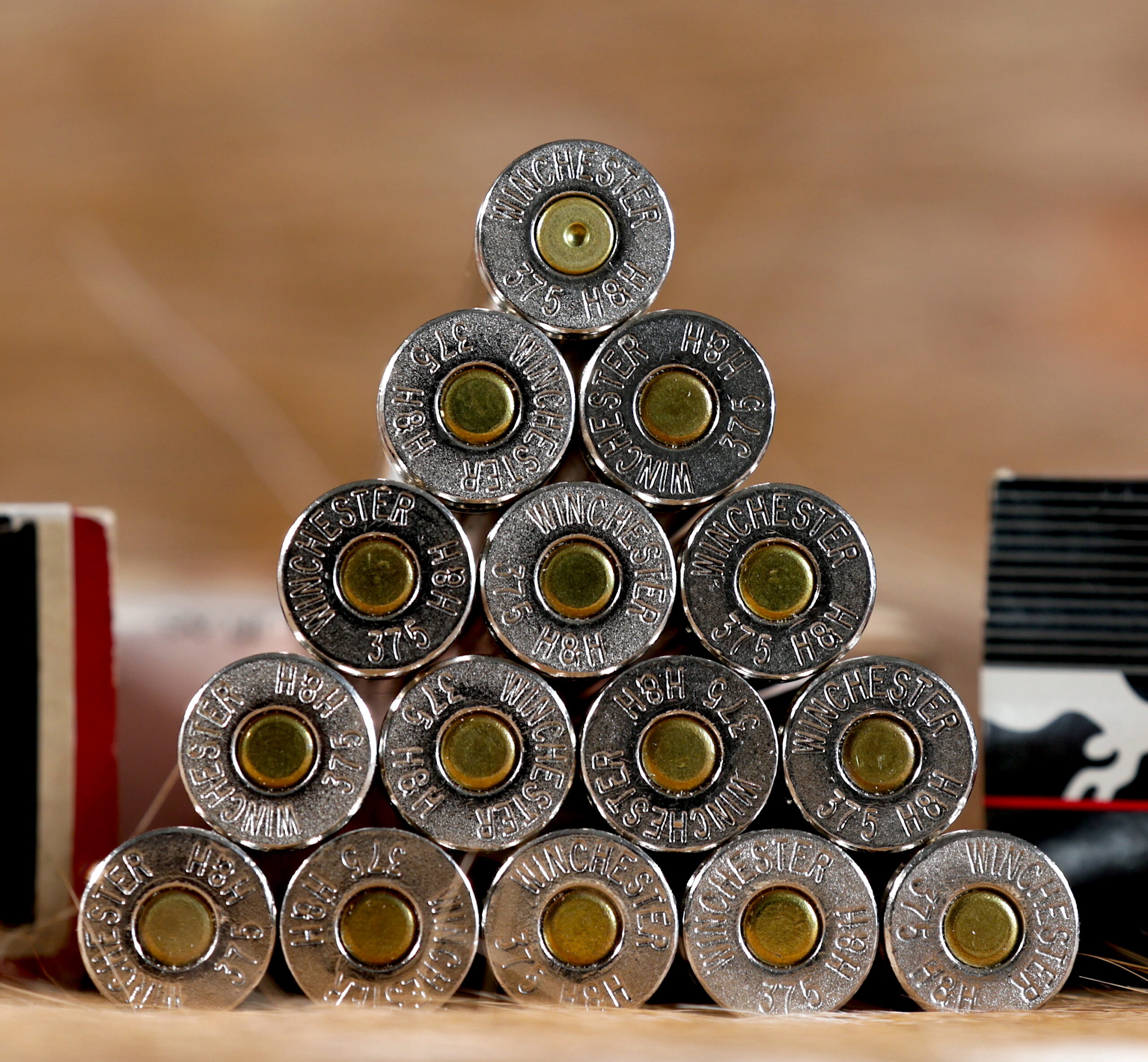
Nowhere does Whelen reveal his level-headed style of analysis more than when discussing hunting large bears. He loathed exaggeration as much as he loathed excessive recoil, so when discussing the best all-around bear cartridges he walks a fine line in terms of his recommendations.
On the one hand, he discusses how tales of the ferocity of grizzly bears are vastly overstated—but without minimizing their toughness. “Today there is little danger attending the hunting of the grizzly for a fairly good shot, equipped with a modern rifle of fair killing qualities,” he said. “However, a grizzly can carry away an awful amount of lead, and from the standpoint of obtaining the bear as well as for protection, a powerful rifle is desired.”
What qualified as “powerful,” according to Whelen, were the .30/40 Krag, .30/06, .405 Winchester, .35 W.C.F., and the .375 H&H.
He rightly noted that the .375 H&H was a cut above those other rounds. At one point he described a scenario where when hunting large coastal brown bears in thick cover around salmon streams carrying a stopping cartridge like the .375 H&H was the way to go.
But he also understood the limitations of the round in terms of practical accuracy for most hunters.
“The recoil is not severe to the thoroughly trained rifleman, but is rather heavy for the novice and the ordinary sportsman,” he said. He goes on, “I find that in many cases sportsmen have selected a rifle for this cartridge because they have had failures with the .30/06 cartridge. In almost every case of this kind, if we analyze the seeming failures with the latter cartridge we find that they are due either to a lack of skill in marksmanship, or else the wrong type of .30/06 cartridge was chosen for the game in question. The .375 Magnum cartridge will not in any sense make up for any lack of skill in marksmanship.”
READ NEXT: Best Bear Hunting Cartridges
He continues to hammer home this point, saying that a typical sportsman will be ill served trying to overgun for any animal, and is better off shooting a milder round with an appropriate bullet.
“It is certain that if one is a poor or only ordinary shot, he will shoot much worse with a rifle taking the .375 Magnum cartridge than with one less heavily loaded, due to recoil.”
That perspective is as valid today as it was more than 70 years ago.
Best for Black Bear: .35 Remington
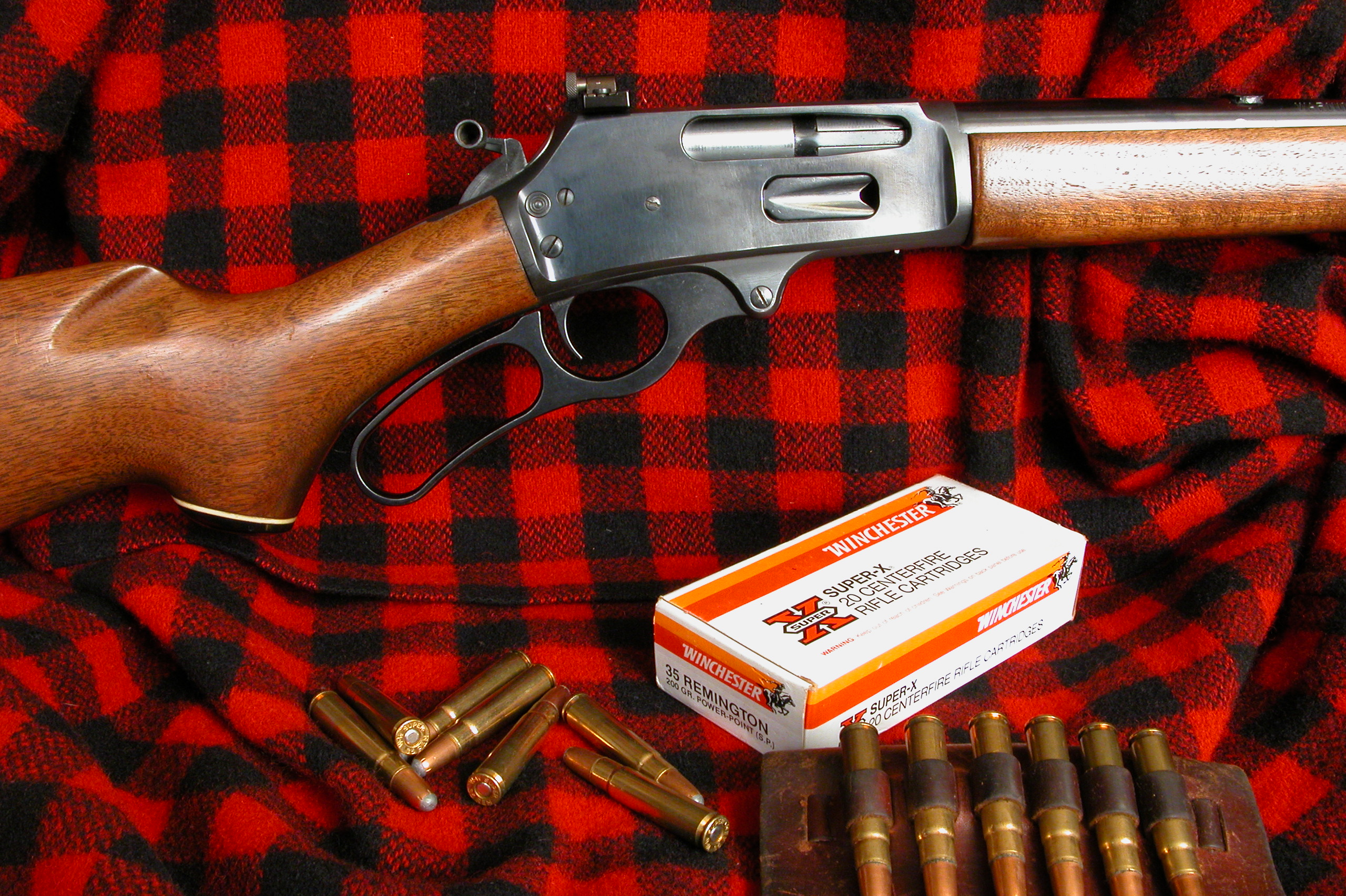
This entry requires a bit of a caveat. First off, when Whelen first wrote about hunting black bears in American Big Game Shooting, he didn’t offer a recommendation as to which cartridge to use. It is the only animal in that book that he declined to list one for.
His reason for doing so was because he didn’t care to hunt them himself and wanted to see them protected by adequate game laws. At the time, bear hunting was largely unregulated and they were regarded as vermin. “The black bear is the only species of American game that I have not shot, and I never want to,” he said.
“The black bear is the most amusing, ludicrous, human, and understandable of our wild animals, and in captivity it makes a most interesting pet…. It is entirely harmless, except on rare occasions, and it should be protected by proper game laws and permitted to survive,” he wrote.
That said, the book, which he did in conjunction with the Western Cartridge Company, had a picture of the above-mentioned .35 Winchester Cartridge under the black bear entry, which was a good all-around big-game woods cartridge.
The rise in popularity of the .35 Remington no doubt hastened the .35 Winchester’s demise. It was initially offered in Remington’s Model 8 autoloading rifles and was later chambered in Remington Model 14 and 141 pump actions and the Model 30 bolt gun. Marlin started chambering it in their lever-actions in 1953.
All this is to say that Whelen recognized the capabilities of the .35 Remington as an all-around option for deer, bear, and other animals.
“It is a good cartridge of moderate power and range for use on all American big game. It kills very well at medium ranges, being in this respect much superior to cartridges of the .30/30 class,” he said.
He felt the cartridge was a good match for the Remington Model 141 in particular. “Deer will be killed much more quickly and reliably than with the other cartridges adapted to this rifle, and (in the rifle it) is by no means out of the running for moose, elk, or large bear.”
Best for Antelope: .257 Roberts
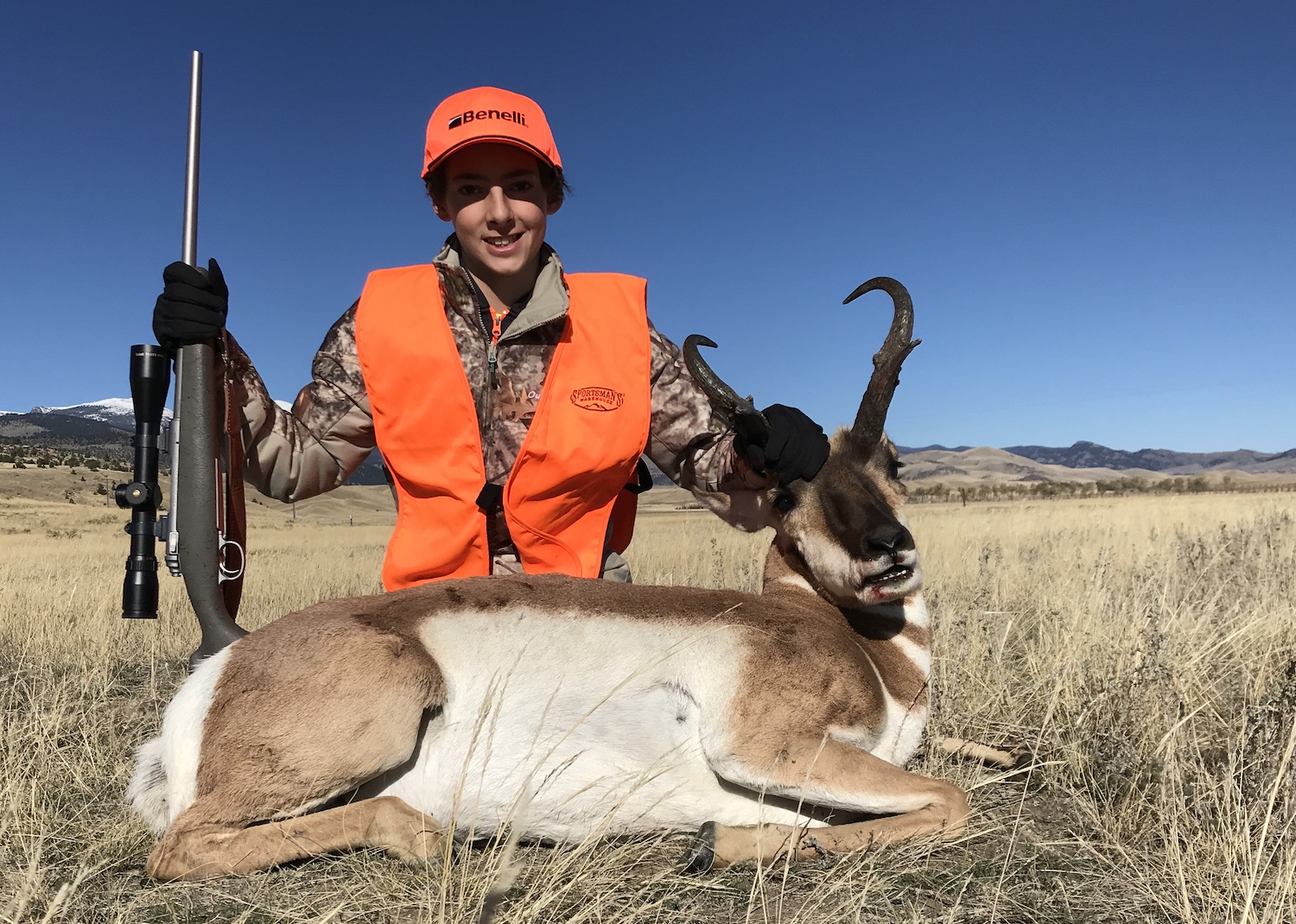
Among all the cartridges Whelen spent time with, the quarter-bore “Bob” was his all-time favorite. He was in touch with Ned Roberts during the development of the .257 Roberts in the mid-1920s and encouraged him to call it the “.25 Roberts” in light of the effort he put into creating the round, which is based on a necked-down 7×57 Mauser.
“I think that no man has ever spent so much time in perfecting a cartridge as Mr. Roberts spent on this one,” Whelen wrote.
Whelen who was an avid varmint shooter and one of the driving forces behind the development of benchrest shooting, loved small, accurate cartridges so it is no wonder he took to the Roberts when it was introduced.
He favored 100-grain bullets for their flat shooting and hard-hitting capabilities on woodchucks out to 300 yards and on crows to 200 yards.
“I do not know of a finer long range varmint cartridge than this, particularly with hand loaded cartridges,” he said.
He didn’t feel it was limited to popping chucks, however. “It has been proved innumerable times that the full charged cartridges loaded with 100- and 117-grain bullets give excellent results on deer, and we therefore here have a most excellent all-around cartridge which a rifleman can use all year round for small game, varmints, and target, and then take into the big woods after deer in the fall,” he said, adding that other than for moose and elk it was a good option for other game, including antelope.
Read Next: Best Antelope Cartridges
Because of its light recoil, relatively soft report, excellent accuracy, and—for the time—wide bullet selection he said it would get the nod as the one cartridge he’d pick if could only shoot one.
“I consider it a very fine cartridge, and if I had of necessity to confine myself to one rifle only I would choose it in this caliber,” he said.
Best for Sheep and Mountain Goats: 7x57mm Mauser
Whelen didn’t mince words when it came to hunting sheep and goats. He knew through first-hand experience how challenging those animals are, both in terms of the terrain that needed to be traversed to get to them and the difficult shots a hunter was often confronted with.
“The hunting and stalking of them is so difficult that the head of a big ram killed by fair stalking is the most prized trophy that can fall to the rifle of the American hunter,” he said. “Often the stalk ends with the hunter quite a long distance from his game with no chance of getting closer unobserved…for this reason a rifle adapted to a cartridge of very high velocity and extreme accuracy at long ranges is most desirable.”
The two cartridges he touted as most capable for this work were the “.30 caliber Model 1906” shooting a 180-grain “Open Point” and the 7mm Mauser shooting a 139-grain open point.
In his personal 7mm Mauser he was able to swap between 175-grain expanding bullets for large game and the 139s when it came time to go after deer, sheep, goats, antelope and varmints.
When zeroed with the 139s at 100 yards, the 175s shot to point of aim at 200 yards, giving him the confidence to swap ammo as needed on the fly.
But he warned his readers not to count on that trick working in their personal guns.
“Sometimes such a combination can be worked out for certain rifles, and for some it cannot be accomplished. It is not so much a matter of cartridge, caliber, or make of rifle, as how the individual barrel vibrates with each load.”
Best for Caribou: 6.5x54mm Mannlicher Schoenauer
One thing that’s clear to me is that Whelen would have been a fan of the 6.5 Creedmoor. He loved mild, accurate, and effective cartridges, particularly when loaded with the proper bullets, and didn’t hesitate to employ them on big game.
It shouldn’t come as a shock then to see him sing the praises of the 6.5x54mm Mannlicher Schoenauer as a good choice for caribou.
“Caribou are often found in open or partly open country, and the careful stalking necessary to bring them to bag, with attention to wind, sight, and hearing, make their pursuit a splendid sport,” he said. “As they are often in localities where it is impossible to approach very closely, a rifle which is effective at long range is very desirable, usually one firing a military or semi-military type cartridge.”
He says that caribou deserve a cartridge along the lines of what one would use for elk and lists the .30/06, 7mm Mauser, and 6.5mm Mannlicher as examples—all of which were standard issue military rounds at the time.
Final Thoughts on Townsend Whelen’s Favorite Big Game Cartridges
Whelen’s eclectic and open-minded approach to cartridges was a defining characteristic of his. So narrowing down a list of his favorite rounds is a bit tricky.
On the one hand, in 1923 he called the .30/40 Krag the “most useful” and “successful cartridge ever made for the American sportsman” that “will kill with a single shot any game in America.” He supported that statement with anecdotes of his own success with the .30/40 Krag in the field, including a one-shot instant kill on an 18-foot crocodile. Fast forward 17 years to 1940 and he doesn’t even mention the round in his thick tome, The Hunting Rifle.
That was in part a function of the rapid pace of small arms and ammunition development at the time. Whelen’s job was to be on the cutting edge of all things ballistic, and he refused to stick with something out of a sense of nostalgia.
That said, having read much of what Whelen wrote I’ve aimed to do him justice with the rounds I picked. All of the cartridges mentioned are ones he bestowed his imprimatur upon, though I will be curious to see what other fans of “Townie”—as he was called by his friends—think his favorites would have been.

